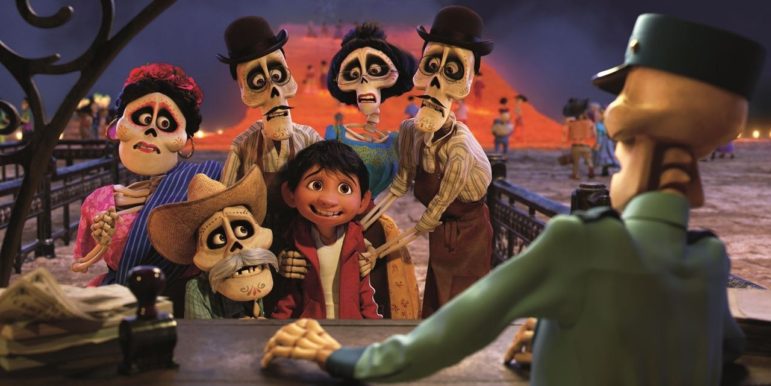
So far the movie “Coco,” directed by Lee Unkrich, has become the highest grossing film in Mexico at around $43 million. It’s about a young boy named Miguel who has a deep passion for music and playing the guitar despite his family being against the practice of music in general. He soon finds himself in the Land of the Dead where he teams up with a man named Hector to search the Land and find the truth behind his family.
Like most Pixar movies, the main character goes through a thrilling adventure that helps him realize an emotional life lesson: sticking with family through the hard times is important. This moral makes the movie more inclusive to an older audience, which may be left out at times when it comes to Pixar movies that are typically directed towards kids.
The beautiful animation of Pixar is also well-known and something they kept consistent with “Coco.” The detailed wrinkles on Miguel’s great grandmother’s face were so precise and realistic that touching them seemed feasible. Additionally, the chair she sat on was expertly designed as even the pieces of straw woven together were visible. Even the paint that appears on Miguel’s face in one part of the movie slowly fades and rubs off over time, which shows the animators really paid attention to every single detail of the movie’s design.
The rich colors of the cities and clothing really reflected the bright, passionate characters and plot of “Coco.” With their color designs, shingled roofs and rectangular shapes, the architecture found in the movie is similar to what’s found in Mexico.

The culture of where “Coco” took place really impacted how each character thought and acted. For example, the strong ties toward family was a recurring theme as well as Miguel’s grandmother praying on various occasions.
Throughout the dialogue, simple Spanish words were added in to make the viewers feel that they were actually in a city in Mexico. These words were either very basic Spanish such as “hola,” or cognates — Spanish words that sound similar to English words — like “familia.” However, there were some instances where songs had too many complicated Spanish words for a person who only took a few years of Spanish to understand. These words were not directly relevant to the plot, but they certainly would have been nice to know.
The director of the movie was not of Latin American origin himself, but did hire a Mexican co-director as well as casting an all-Latino voice cast. This was a Hollywood first, and was praised by many for making a huge step in including more minorities in the industry.
Another progressive aspect of the movie was the female characters. There were many occurrences where they did not depend on the male cast, and displayed strong, confident attitudes. For example, Miguel’s great-great-grandmother decided to take matters into her own hands multiple times which helped him out in his adventure.
Furthermore, while the movie may seem to be centered around Miguel, the title of the movie as well as the plot actually explore more about his great grandmother, Coco. It was heartening to see her and the other women have confidence and initiative since many movies have an absence of tough, independent female characters.
On the other hand, the plot was easy to predict and the role of each character in the future was easy to guess. Also, some darker themes, such as poison and murder, were in the movie. Usually characters in Pixar movies are hinted to be dead but never say outright that they were deceased, but since this is a movie partially about the Day of the Dead, it made sense that wouldn’t be the case.
Having a diverse voice cast, strong independent female characters, and a stressed importance on culture leaves “Coco” blazing a trail to introduce more diversity and change the norms that the movie industry has maintained for so long. Hopefully Hollywood can keep up.





